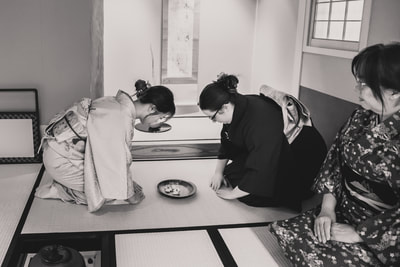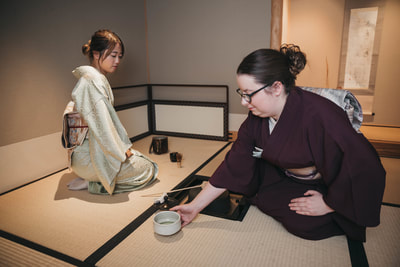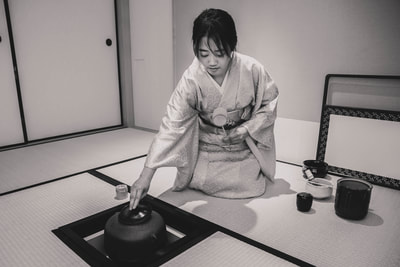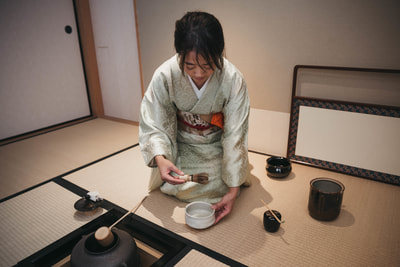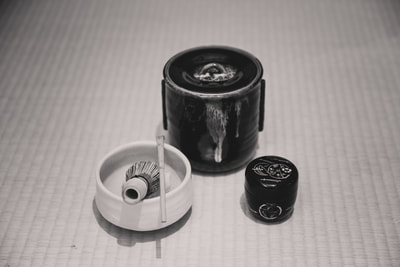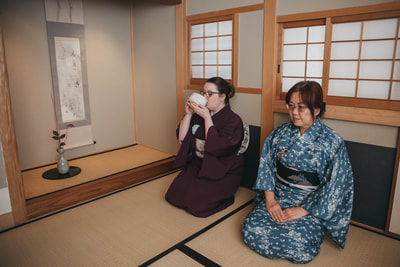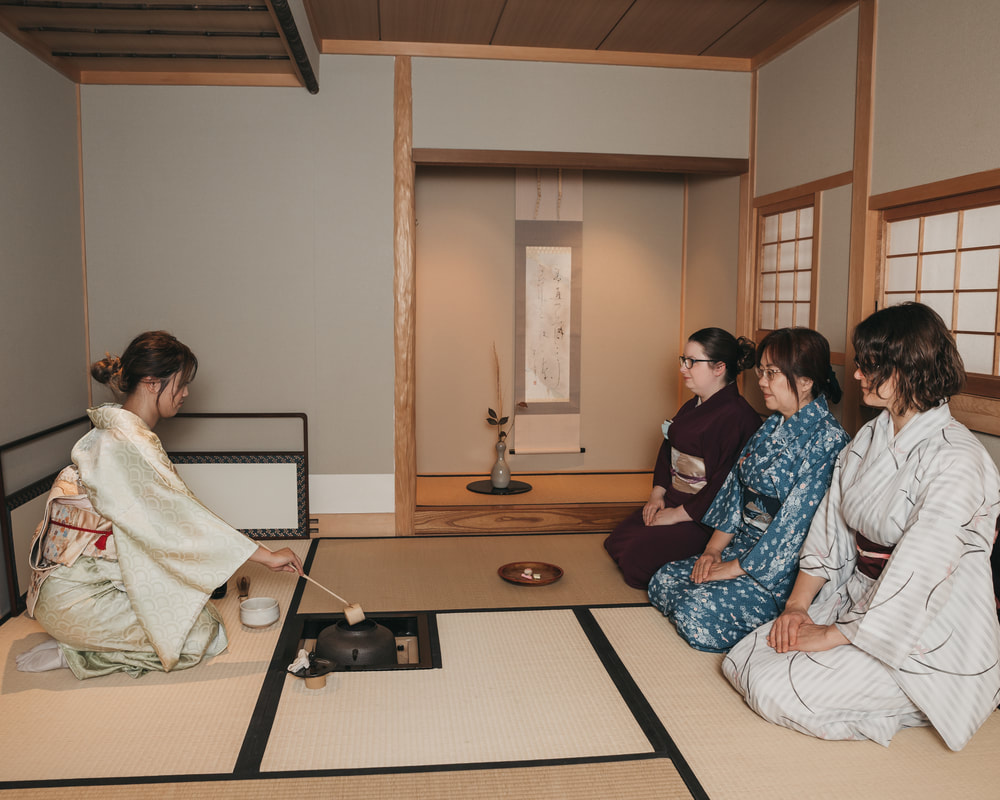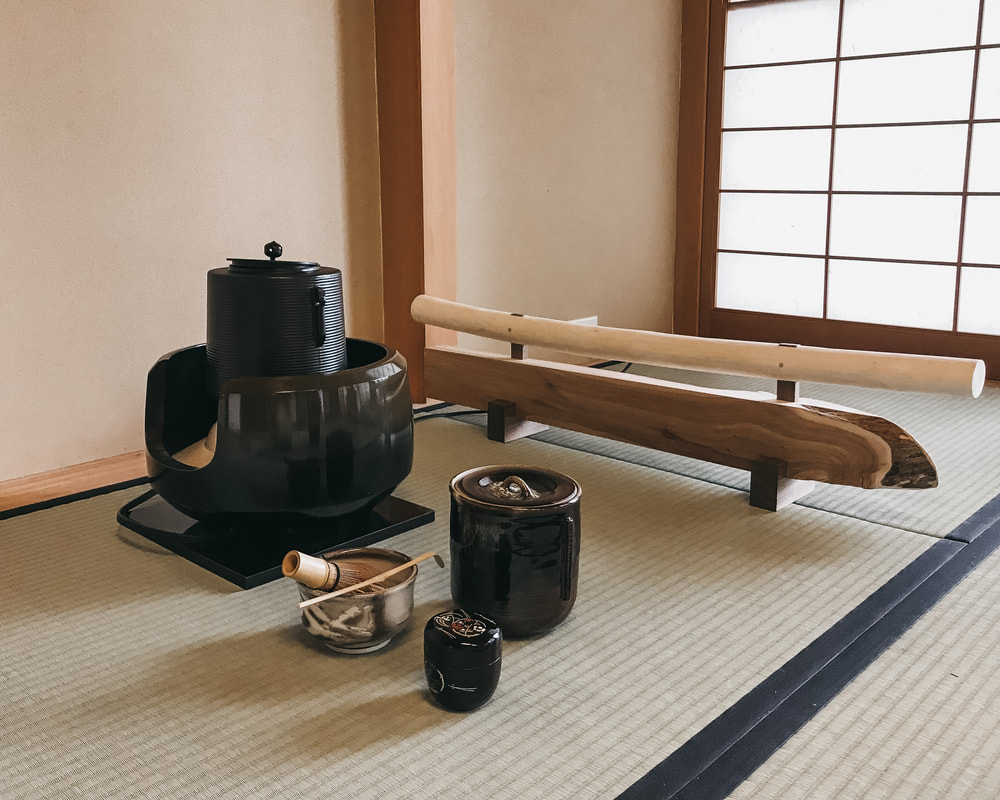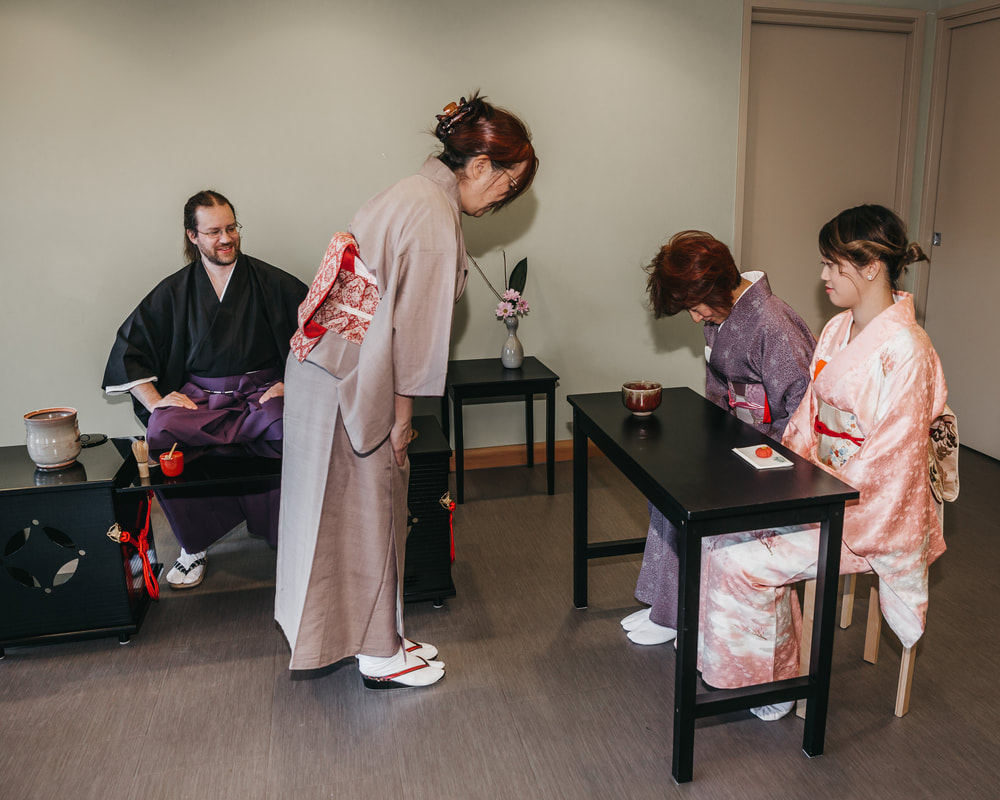Japanese Tea Ceremony
|
Cha No Yu (literally, hot water for tea) is the Japanese art of making and sharing tea. It began in the 15th century, and is described as “not an amusement, nor a technique either, but an enjoyment of enlightened satisfaction”. According to the Urasenke Foundation, “chanoyu is a synthesis of arts that gives expression to many aspects of Japanese Culture. A simple bowl of tea, served with a respectful heart and received with gratitude, satisfies both physical and spiritual thirst”.
The tea served in Chanoyu is a special green tea called Matcha. It is a fine powder which is whisked in hot water. This tea is served after a Japanese sweet (wagashi), as the flavors of the sweet and the tea complement and enhance each other. |
Styles of Tea Ceremony
RoDuring the winter months, traditionally from November to April, the sunken hearth (ro) is used for the tea ceremony. This service is performed in the small tearoom (about 3 meters square) at the Ozawa Pavilion and the doors of the room are kept closed. The heat from the kettle warms the room, creating a cozy and intimate atmosphere. Guests sit on the tatami mat floor in the traditional Japanese manner.
|
FuroDuring the summer months, traditionally from May to October, a brazier (furo) is used for the tea ceremony. This service is performed in the large tatami room at the Ozawa Pavilion. Guests sit on the tatami mat floor in the traditional manner.
|
RyureiThe tea is prepared by a host who is seated at a special table. The guests are also seated on chairs. This is a more modern approach to the tea ceremony, but the essence of chanoyu remains the same. The Matsukaze Chanoyu Association is please to be hosting ryurei style ceremonies in the Ikoi No Ba. This expansion was specifically designed with this style of tea ceremony in mind.
|

